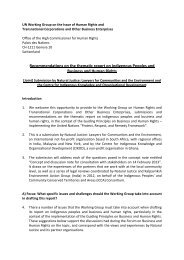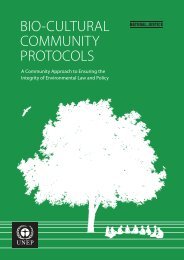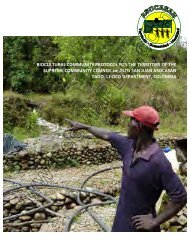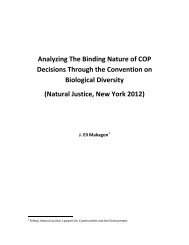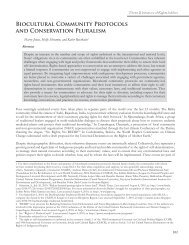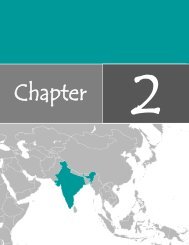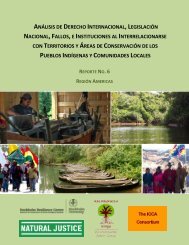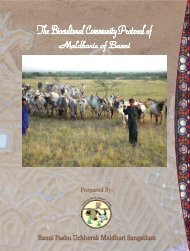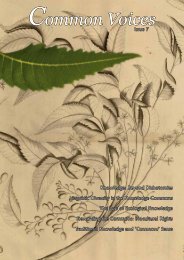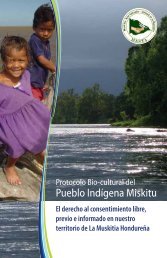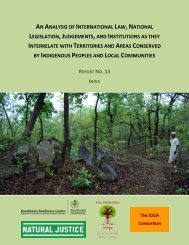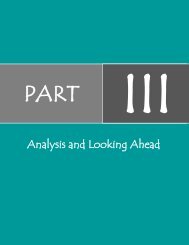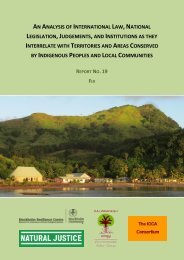English - Natural Justice
English - Natural Justice
English - Natural Justice
Create successful ePaper yourself
Turn your PDF publications into a flip-book with our unique Google optimized e-Paper software.
autonomy and self-determination within their territory. This allows them to establish theirown protected areas such as Galus and Birias, being terrestrial and marine SNSs.Each Comarca has its own land and natural resources laws. The Embera-Wounaan Lawdesignates specific lands to the conservation of flora, fauna and water for the preservationof life. Under the authority of its General Congress, it established a Division of Lands andLimits, which is responsible for the implementation of physical planning, and the Division of<strong>Natural</strong> Resources and the Environment, responsible for the planning and implementation ofnatural resources management, including conservation areas. It does so in coordination withthe National Environmental Authority of the Government of Panama.5.3 Recommendations for Non-legal Recognition andSupport by Governments, Intergovernmental andNon-governmental Organizations, ResearchInstitutions, and DonorsLegal reforms and recognition alone do not secure Indigenous peoples’ and localcommunities’ rights and ICCAs. Appropriate forms of non-legal recognition and support suchas those set out below also play an essential role, and sometimes pave the way for legalrecognition. They should be undertaken in accordance with customary laws and values,community-defined plans and priorities, and gender considerations, and with the fullinvolvement and free, prior and informed consent of the Indigenous peoples and localcommunities concerned, careful handling of sensitive information, and respect for thosewho do not wish to be involved. In all of the following recommendations, the fullinvolvement of both women and men and of communities as a whole rather than only a fewindividuals needs to be ensured; special facilitation may be necessary for weaker ordisprivileged groups. Provide appropriate administrative and programmatic recognition and supportthrough, for example, national and sub-national strategies and action plans, incentiveschemes, programmes, and research and funding policies related to the environment,development, Indigenous peoples and local communities, women’s empowerment, andsocial welfare. Work with Indigenous peoples and local communities to undertake locallyappropriate research to further develop the knowledge base about aspects such as theconservation benefits and values of ICCAs, threats to ICCAs, and community-determinedplans, priorities and protocols for maintaining the integrity of their ICCAs. Particularemphasis should be placed on enabling community members to conduct their own researchand documentation and to communicate it in their own words, including through Indigenousand community media. Care also needs to be taken to avoid documentation that couldthreaten the ICCA by bringing unwanted attention. Increase public awareness and social recognition of Indigenous peoples’ and localcommunities’ rights and their ICCAs through relevant workshops, festivals and celebrations,awards for exemplary conservation, livelihood or development initiatives, appropriateinclusion in educational curricula and programmes, and constructive coverage in print,broadcast, online, social, and other media.



